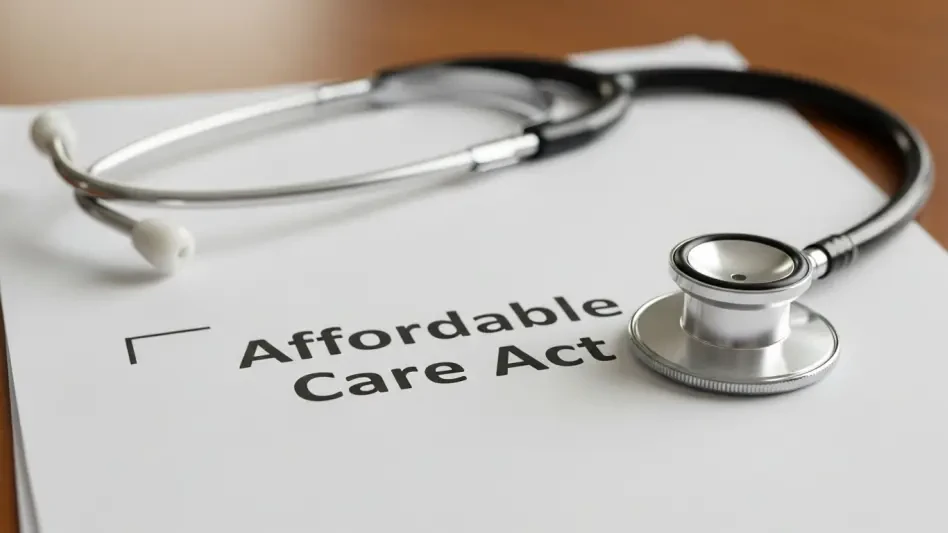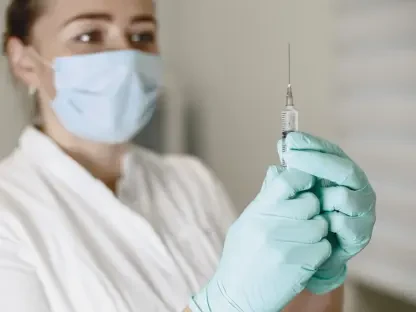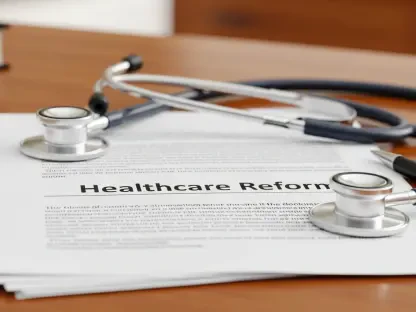What happens when the very systems designed to protect public health grind to a halt over political disagreements, leaving millions vulnerable? As of October 1, a federal government shutdown has paralyzed essential health services across the United States, leaving countless Americans caught in the crossfire of a heated debate over Affordable Care Act (ACA) subsidies. From shuttered community clinics to stalled medical research, the impact is immediate and personal, affecting federal workers, patients, and vulnerable populations. This crisis, unfolding in real time, raises a critical question: how long can the nation endure such disruption before the damage becomes irreparable?
A Nation Held Hostage: How Budget Battles Jeopardize Health Care
The current government shutdown, triggered by a failure to pass a budget, has turned health care into a bargaining chip in Washington’s latest standoff. With Congress at an impasse, critical services that millions rely on daily are now on hold. Community health centers, often the only option for low-income families, face potential closures, while disease monitoring programs struggle to operate with skeletal staff. For many, this isn’t just a policy debate—it’s a matter of survival, as access to affordable care hangs in the balance.
Beyond the immediate effects, the shutdown exposes deeper vulnerabilities in the health care system. Federal employees, numbering around 750,000, have been furloughed, facing financial uncertainty while their work supporting public health programs remains undone. Patients, meanwhile, are left scrambling for alternatives, unsure if they can afford the next doctor’s visit. This gridlock, centered in the nation’s capital, reverberates into every corner of the country, turning a political dispute into a public health emergency.
The Stakes of Shutdown: Why Health Care Is on the Line
At the core of this crisis lies a fierce disagreement over funding for expanded ACA subsidies, a lifeline for roughly 20 million Americans enrolled in marketplace plans. Democrats argue for an immediate extension of these subsidies, warning that their expiration could trigger premium spikes as ACA enrollment opens on November 1. Republicans, however, demand reforms, such as adjusting income eligibility caps, before agreeing to any deal. This clash has stalled budget negotiations, leaving health services as collateral damage.
The consequences extend far beyond policy debates. Federal support for vital programs, including community health centers and medical research at the National Institutes of Health (NIH), has been slashed. The Centers for Disease Control and Prevention (CDC) has scaled back disease surveillance, raising concerns about the nation’s ability to respond to outbreaks. With the Department of Health and Human Services (HHS) furloughing 40% of its staff, existing shortages are exacerbated, creating delays that could cost lives. The urgency of resolving this deadlock cannot be overstated as the health of millions teeters on the edge.
Unpacking the Crisis: Major Impacts and Political Tensions
The shutdown’s effects are both broad and immediate, cutting deep into the fabric of public health infrastructure. Community clinics, serving as primary care hubs for underserved populations, are at risk of shutting their doors without federal funds. Research initiatives at the NIH have been paused, delaying breakthroughs that could save lives in the future. Even disaster mitigation efforts by the Federal Emergency Management Agency (FEMA) are halted, compounding the nation’s vulnerability. Economically, the toll is staggering, with back pay for furloughed workers estimated at $400 million daily by the Congressional Budget Office.
Politically, the battle lines are drawn with little room for compromise. Democrats insist that extending ACA subsidies is non-negotiable to prevent premium hikes that could push healthier enrollees out of the market. Republicans counter with calls for structural changes, arguing that unchecked subsidies strain federal budgets. This stalemate has created a dangerous game of brinkmanship, where neither side seems willing to budge, even as the public pays the price. The longer this persists, the more severe the disruptions become, threatening long-term damage to health care access.
Voices from the Frontlines: Perspectives from Experts and Communities
Amid the chaos, voices from those directly affected and experts in the field paint a stark picture of the shutdown’s toll. G. William Hoagland of the Bipartisan Policy Center has described the lack of bipartisan dialogue as “unprecedented,” warning that such political gamesmanship risks permanent harm to public trust. Democratic leaders argue that Republican resistance to subsidy extensions endangers health care access for millions, while GOP counterparts claim Democrats are using the issue to score political points. The rhetoric on both sides only deepens the divide, leaving little hope for a swift resolution.
On the ground, the human cost is palpable. Federal workers, many of whom support health programs, face mounting financial stress with no paycheck in sight. Patients at community clinics share stories of canceled appointments and uncertainty over where to turn next. Insurers, bracing for the possibility of subsidy expiration, predict double-digit premium increases, a burden that could hit enrollees as early as the upcoming enrollment period. These personal accounts underscore the real-world stakes of a crisis that feels all too distant to those in power.
Navigating the Fallout: Strategies to Mitigate the Damage
While congressional gridlock shows no sign of breaking, there are practical measures that can lessen the shutdown’s impact on health care. Policymakers could prioritize temporary funding bills to restore critical services like CDC surveillance and community health operations, a tactic that has provided relief in past shutdowns. Such stopgap measures, though not a permanent fix, could buy time for broader negotiations. Staying focused on immediate needs rather than ideological battles might offer a path forward for lawmakers under pressure.
For individuals, particularly ACA enrollees, preparation is key. Keeping abreast of enrollment deadlines starting November 1 and exploring state-based assistance programs can help cushion against potential premium hikes. Advocacy groups have a role to play as well, by amplifying the stories of those affected and urging compromise on subsidy extensions. Communities, meanwhile, can turn to local health networks to bridge gaps left by federal cuts, ensuring that the most vulnerable aren’t abandoned. These steps, while limited, provide a buffer against the storm until a resolution emerges.
Looking back, the government shutdown that began on October 1 stood as a sobering reminder of how quickly political disputes could unravel essential services. The disruption to health care, from community clinics to disease monitoring, left an indelible mark on millions of lives. Moving forward, the focus must shift to building safeguards against such crises, whether through legislative reforms that prioritize emergency funding or mechanisms to ensure health services remain untouched by budget battles. Collaboration across party lines remains the most viable solution, demanding a commitment to place public well-being above partisan agendas. Only through sustained effort and dialogue can the nation prevent history from repeating itself with even graver consequences.









